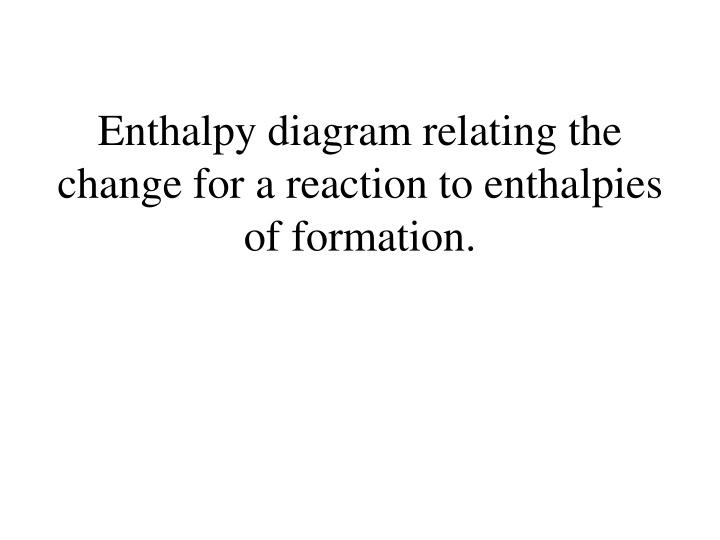
Enthalpies of Formation and Chemical Kinetics
Explore enthalpy diagrams, enthalpies of formation, and chemical kinetics in this comprehensive guide. Learn how the change in reaction enthalpies relates to enthalpies of formation and delve into the rates of reactions and chemical kinetics to understand the speed of chemical processes over time.
Download Presentation

Please find below an Image/Link to download the presentation.
The content on the website is provided AS IS for your information and personal use only. It may not be sold, licensed, or shared on other websites without obtaining consent from the author. If you encounter any issues during the download, it is possible that the publisher has removed the file from their server.
You are allowed to download the files provided on this website for personal or commercial use, subject to the condition that they are used lawfully. All files are the property of their respective owners.
The content on the website is provided AS IS for your information and personal use only. It may not be sold, licensed, or shared on other websites without obtaining consent from the author.
E N D
Presentation Transcript
Enthalpy diagram relating the change for a reaction to enthalpies of formation.
I) decomposition ii) formation of 3 CO2
Reactants H2= - 1181 kJ
H0 (rxn)=
RATES OF REACTION/ CHEMICAL KINETICS
The speed of a chemical reaction is the change in the concentration of reactants or products per unit time.
Rate of reaction after time t is given as rate of disappearance of A or rate of appearance of B
Rate = - = - = = (ii)
Given the concentration of A at 20 s is 0.54M and at 40 s its concentration is 0.30 M.
Calculate the average age at which A disappears over a time interval of 20s to 40s
from 0.100 M to 0.600M when the time changes from 0 s to 210s, calculate the initial rate of reaction of B
Rate = - = = 1.9 x 10-4M/s
Reaction rates decreases as reaction proceeds, because the concentration of reactants decreases.
example when a solid reacts with a liquid the reaction is limited to the area of contact. Reactions involving solids will proceed faster if the surface area of the solid is increased.
concentration increases the frequency with which the reactants collide increases and the rates of reaction increases.
reactions increases as the temperature increases. Increasing temperature increases the kinetic energy of molecules, at higher energy more molecules collide more frequently.
Catalyst speed up rates of reaction without being used up.
The fraction of molecules that possess the an energy greater than Ea
The fraction of collisions that have the appropriate orientation.
